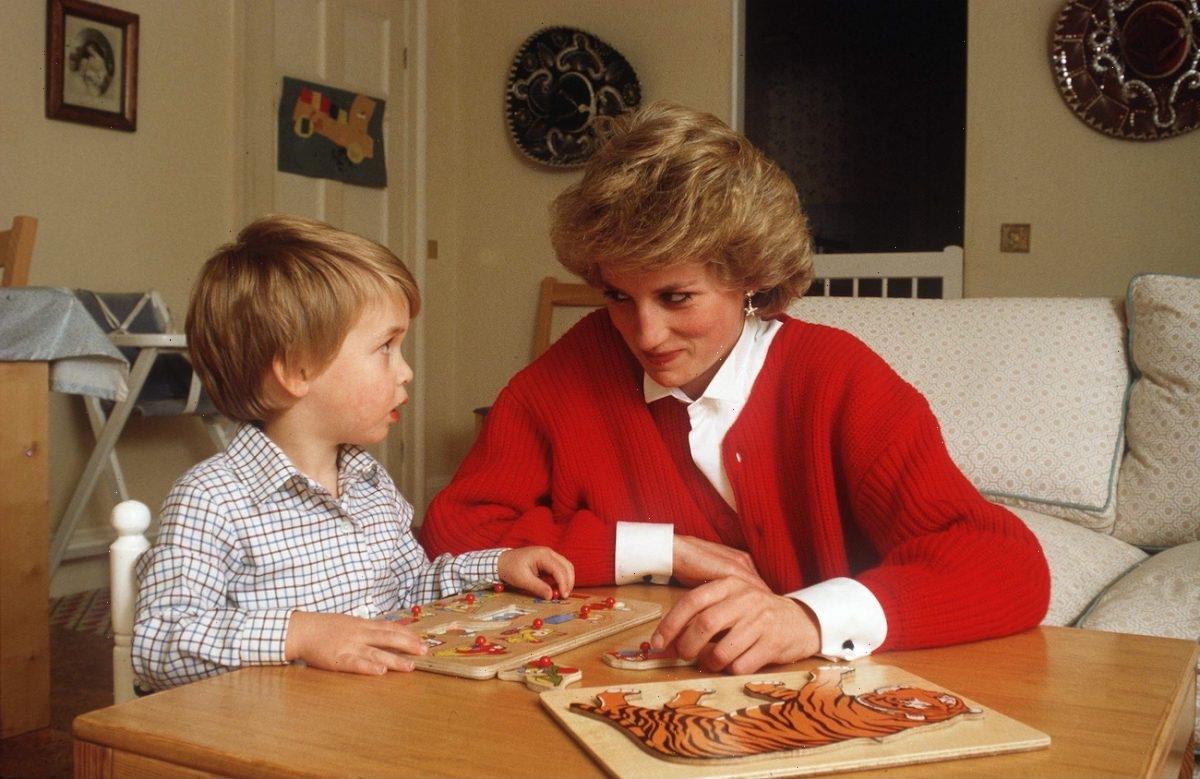Splicing the dark heart of a folk-horror movie into the fluffy body of a rural Icelandic relationship drama yields unexpectedly fertile and darkly comic effects in Valdimir Jóhannsson’s creepy-funny-weird-sad “Lamb,” a film that proves just how far disbelief can be suspended if you’re in the hands of a director — and a cast, and an SFX/puppetry department — who really commit to the bit. Abetted by a performance of unwaveringly invested, freckled seriousness from Noomi Rapace (whose Icelandic certainly sounds convincing to a non-Nordic ear), “Lamb” is as curious a cross-breed as its central little miracle-monster, and just as much a wolf in sheep’s clothing.
Way out here on this isolated hillside, something is spooking the horses. In a majestic beginning, featuring some quite brilliant animal acting (“Lamb” won the Cannes Palm Dog Award for its canine performer, but were there equivalents for equine, feline and of course ovine actors, it would surely have swept the board), the camera prowls and plods its point-of-view way through misty fields. Finally this unseen, not-human-but-not-wholly-animal entity, whose unheimlich nature we understand through the huffing and snorting of Ingvar Lunderg and Björn Viktorsson’s endlessly inventive sound design, and through the panicked fleeing of livestock at its approach, arrives at the sheep barn. Docile ewes huddle together, but one is singled out and something is done to her. The radio plays a Christmas song.
This eerie opening is a fantastic showcase for DP Eli Arenson’s starkly beautiful photography, which plays to the opposite end of the horror spectrum from the jump scare or the sudden wobble; it finds steadiness to be much more scary, and calmness much more uncanny (here, perhaps, we most see the influence of Béla Tarr, Jóhannsson’s erstwhile mentor, whose name pops up as executive producer). The farm belongs to Maria (Rapace) and her partner, Ingvar (Hilmir Snær Gudnason), a hardworking, taciturn couple who, it transpires, are still grieving the loss of a child. Who knows if the silence that exists between them — not a hostile one but a silence nonetheless — only started after that tragedy, or if that’s just who they are. But certainly, the quiet of these misty, mountainous surroundings is unbroken by chatter, and that emptiness, carefully circumnavigated by the couple, becomes a perfect breeding ground for some arcane, perhaps pagan mythology to take root. When the ewe gives birth to a strange hybrid, the immediately lovestruck Maria and Ingvar adopt her as their own. They call her Ada.
Popular on Variety
Jóhannsson is hesitant to the point of coy about showing Ada — it happens at about the 40-minute mark, long after we’ve guessed what she actually is. And the teasing of so much artful framing, so many awestruck reaction shots, so many close-ups of Rapace’s sharp features softening into fuzzy maternal fondness, can get frustrating — just show us the thing already. But once Ada is shown (an excellent combination of practical and special effects) — and it’s a novelty image that never loses its inherent ridiculousness especially after she gets big enough to wear cute waders and dungarees — the decision to delay makes more sense. By that point, we’re so embedded in the heavy, absolutely straight-faced mood that Jóhannsson summons that even the absurdity of Ada’s little person cannot dispel the atmosphere of unease.
For a time, things go well. The new parents are contented, even if Maria does display the ruthless side of her maternal instincts toward Ada’s pining birth mother. But then Ingvar’s ne’er-do-well brother Pétur (Björn Hlynur Haraldsson), with whom Maria has some torrid romantic history, shows up in need of a place to stay, and suddenly this little “Iceland of Dr. Moreau” setup is under threat from a witness from the outside.
Pétur’s slow-blink reaction on being introduced to Ada is another masterstroke of delayed timing, here deployed for overtly humorous effect, giving the otherwise quite prodigiously unsmiling film a nice, cathartic belly laugh. But soon Pétur, too, is won over by the little tyke — the screenplay, tersely co-written by Jóhannsson and Icelandic writer, poet and lyricist Sjón (who also co-wrote Robert Eggers’ upcoming “The Northman”), hints at but never quite develops the idea of Ada’s slightly supernatural ability to make the adult humans around her fall for her. Similarly undercooked is a vaguely emergent religious analogy, with the film’s nativity-like opening — near a manger at Christmas — and Maria’s own name and occasional Madonna-like framing never really adding up to a real thesis.
Perhaps that’s because the storytelling most evoked here is pre-Christian, mythological, folkloric, the kind of discomfiting stories that were not designed to soothe children at bedtime but to threaten people — often mothers — with horrible punishments for upsetting the natural balance and grabbing more than their share of happiness from fate’s cruel, capricious claws. No matter how pure your intentions nor how real your pain, these ancient myths all teach us, debts always come due, and the chilling denouement of Jóhannsson’s dark, deliberate debut suggests that is what “Lamb” is: a modern-day take on some ancient, pre-Disneyfication fairy tale or a nursery rhyme with a sinister history encoded into its Spartan melody. Maria had a little lamb, whose fleece was white as snow …
optional screen reader
Read More About:
Source: Read Full Article

